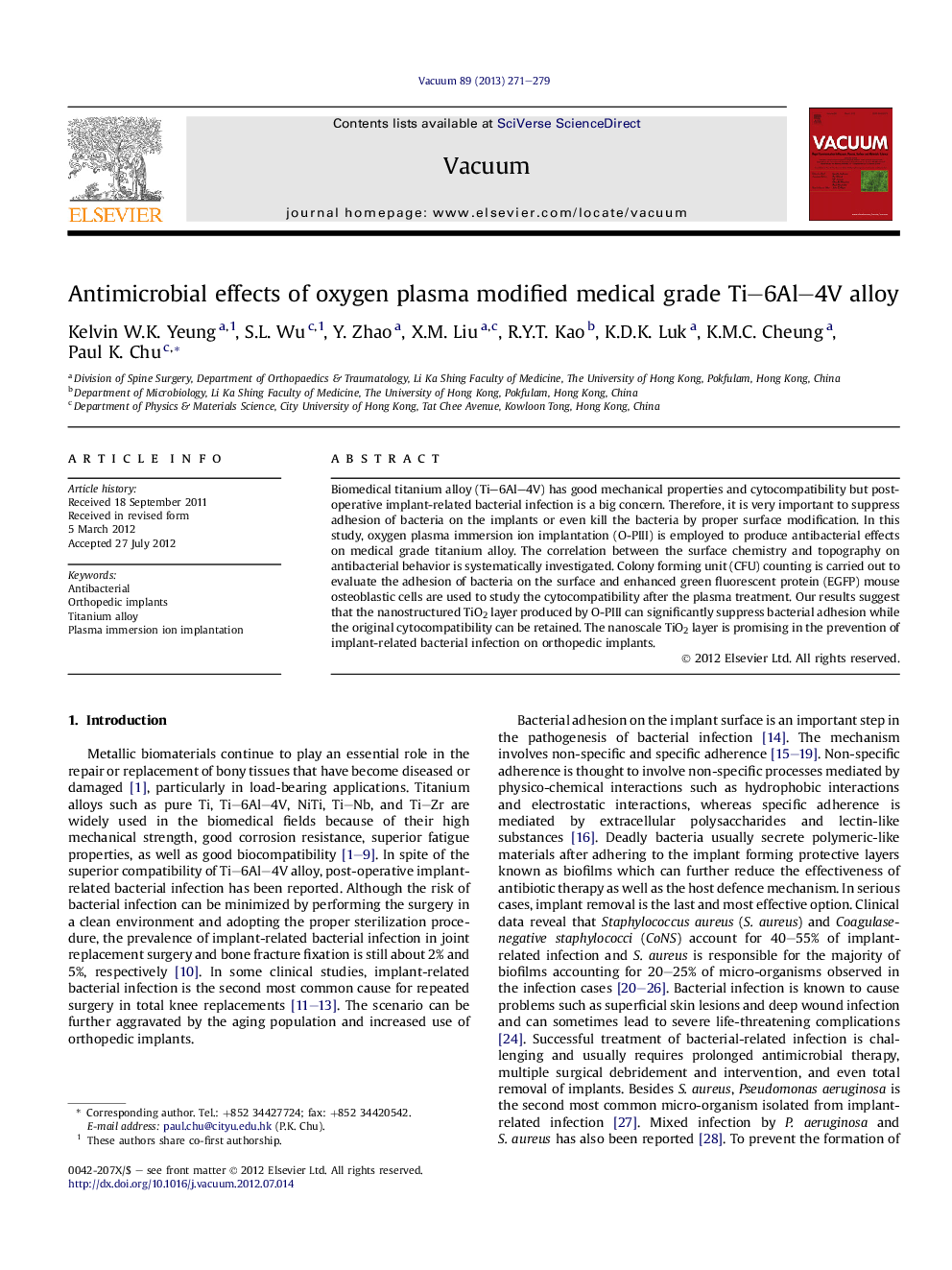| Article ID | Journal | Published Year | Pages | File Type |
|---|---|---|---|---|
| 1690400 | Vacuum | 2013 | 9 Pages |
Biomedical titanium alloy (Ti–6Al–4V) has good mechanical properties and cytocompatibility but post-operative implant-related bacterial infection is a big concern. Therefore, it is very important to suppress adhesion of bacteria on the implants or even kill the bacteria by proper surface modification. In this study, oxygen plasma immersion ion implantation (O-PIII) is employed to produce antibacterial effects on medical grade titanium alloy. The correlation between the surface chemistry and topography on antibacterial behavior is systematically investigated. Colony forming unit (CFU) counting is carried out to evaluate the adhesion of bacteria on the surface and enhanced green fluorescent protein (EGFP) mouse osteoblastic cells are used to study the cytocompatibility after the plasma treatment. Our results suggest that the nanostructured TiO2 layer produced by O-PIII can significantly suppress bacterial adhesion while the original cytocompatibility can be retained. The nanoscale TiO2 layer is promising in the prevention of implant-related bacterial infection on orthopedic implants.
